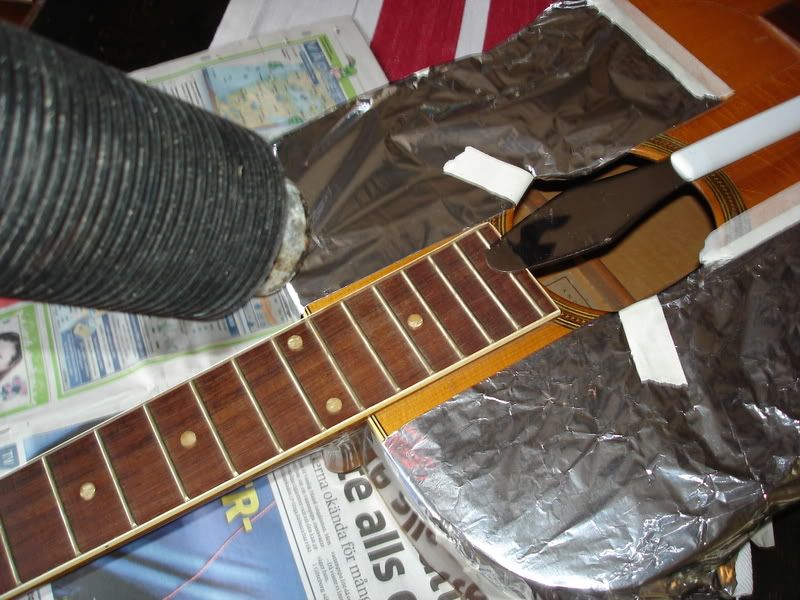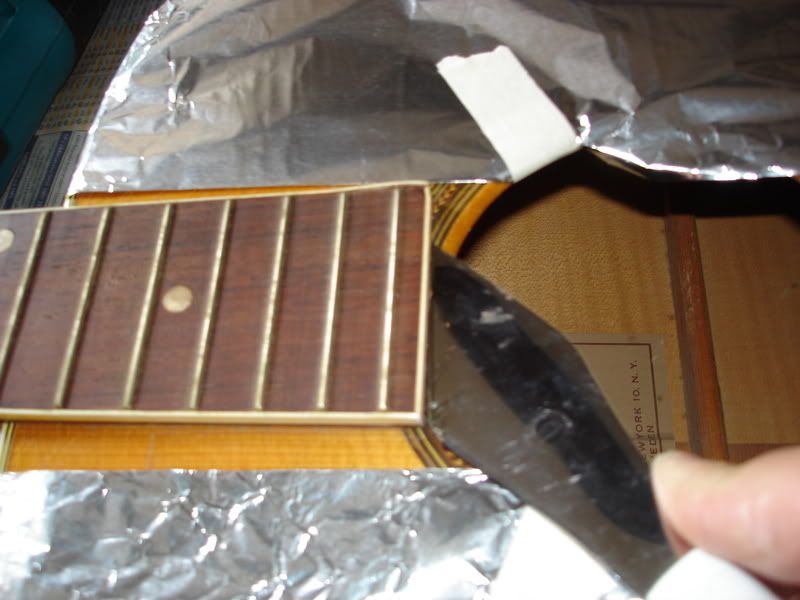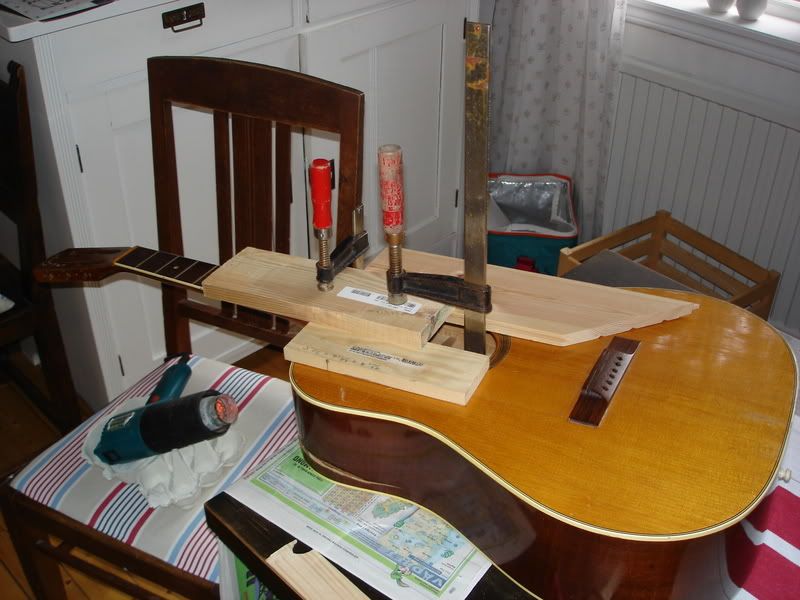I guess the idea came up partly due to lack of more fancy equipment, like steamers.
The idea is to use hot air and expose the joint externally. I have personally used the method for dovetail neckjoints, fretboard overhangs, bridges, and bridge patches (yes, by heating from outside, after removing the bridge).
Some care must be taken to have a far enough distance, so the surface isn´t damaged, and You need to protect the surrounding surfaces from the heat.
Some pictures to illustrate, while removing the neck from a 1964 Goya F-27, which is a Goliath (Dread) with 12-fretted neck, slotted head and fanbraced top. A rather loud machine.
Heating and loosening of the fretboard overhang.



The neck joint is next.




It works quite well, I have used it several times and had no failures. One of the guys on our swedish forum had a bad experience where a pickguard caught fire, but it is a matter of not getting the heat to close. You should be able to stick Your finger in there.
Views: 1699
Replies to This Discussion
-
I'm keen to try this method for removing the tenon-jointed neck of my Epiphone 147. My worry is 'how hot is too hot'? (I've already toasted the fake-MOP dot markers getting the FBE loose).
The finish is polyurethane.I have an infra-red thermometer to measure surface temperature, but does anyone know what temperature PU can withstand?
-
Hello
For bridges and fretboards removal I use an infrared bulb like this one:
http://img.diytrade.com/cdimg/1192158/13178998/0/1276830425/Philips...
-
Eugen, can you tell a little more about this approach? ..thanks, Tom
-
https://lh4.googleusercontent.com/-Vr_hQFenGKk/T8nirJtn63I/AAAAAAAA...
https://lh6.googleusercontent.com/-4hxiiPortSs/TtpZ3DAo91I/AAAAAAAA...
https://lh6.googleusercontent.com/-R8oEIcwI83g/TtpaAsoadfI/AAAAAAAA...
Just protect the top with thick paper and aluminium foil
-
So infrared will blister finish? tw
-
HEAT will blister finishes. Infrared bulbs are made specifically to produce heat. A lot of heat.
-
I'm not that familiar..what are some advantages/differences to a luthier between using the typical 'heat lamp' and an infrared lamp (practical applications, besides where they fall on the spectrum etc) ..thanks, Tom
-
I guess I don't understand your question, Tom.
Infrared lamps are heat lamps. I know of other lamps that produce heat, such as halogens but heat production is not the purpose of those lamps. I understand that infrared lamps come in different wavelengths and configurations but I haven't investigated beyond that. I suppose it should be possible to research them easy enough on the Internet if you want to know.
-
Original post: "I guess the idea came up partly due to lack of more fancy equipment, like steamers."
I would consider a recalculate on this method for some of the work posted. Steamers are almost mid-evil in concept, cost, and operation. The glue needs heat more than the wood.
- ‹ Previous
- 1
- 2
- Next ›
© 2025 Created by Frank Ford.
Powered by
![]()